In this article, we are going to learn about the fundamentals of MySQL Views. In this article, I am going to cover the following topics:
Read more »
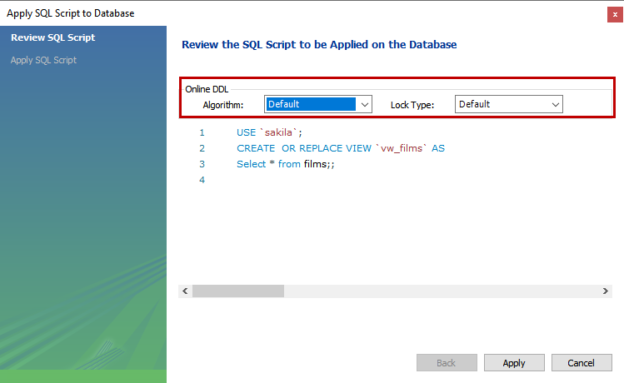


In this article, we are going to learn about the fundamentals of MySQL Views. In this article, I am going to cover the following topics:
Read more »
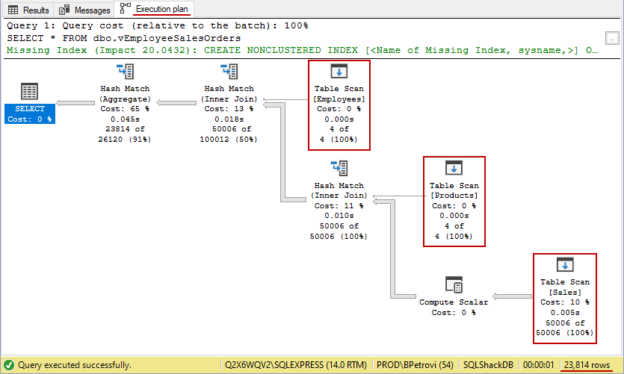
This is the fourth article in a series of learning the CREATE VIEW SQL statement. So far, we have done a great deal of creating and altering views using T-SQL. In this last part, I want to take a big look at how to work with indexed views.
Read more »
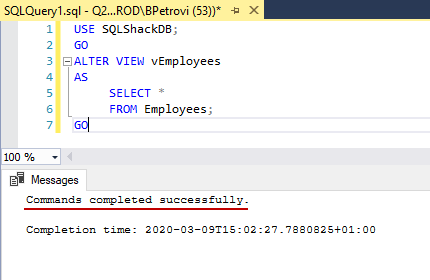
This is the third article in a series of learning the CREATE VIEW SQL statement. So far, I’d say that we’re comfortable and familiar with the syntax, and we’ve learned how to create and modify views. In this part, we’ll continue to work on views using the sample database and data that we created so far.
Read more »
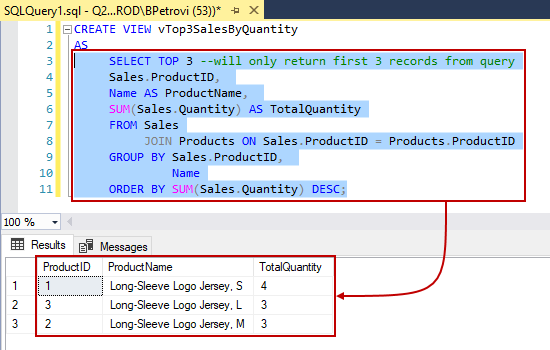
In my previous article, we looked at how to use the CREATE VIEW SQL statement to create views. In this one, we are moving on and focusing on how to modify views. We will continue using examples on a sample database and data created in the first write-up so in order to follow along, head over and read the Creating views in SQL Server part before starting with this one.
Read more »
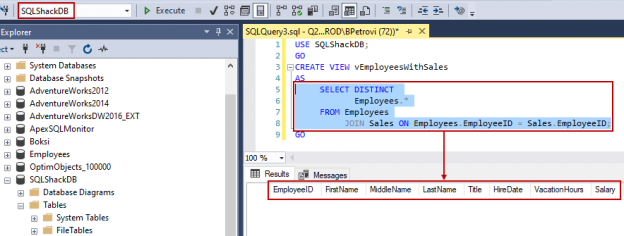
In this article, we are going to see how to use the CREATE VIEW SQL statement to create a view. This is the first article in a series that will be a programmatical approach of creating, altering and working with views using T-SQL. If you are a beginner and you don’t even know what a view is, don’t worry. We will kick off with a definition, and then move on to some basics like syntax, examples, use cases, etc.
Read more »

We’ve recently had production failures because our developers changed an important reference. In this case, we had a view which several procedures and views referenced. A developer made a change to the referenced view by removing columns, which caused several procedures and a view that referenced it to fail. We’re considering whether we should stop this practice, or if there are other ways we can prevent changes to an object that’s being referenced by other objects (in our case, a view).
Read more »

This article explains data security for accessing sensitive data and restricts access in application using SQL Views and stored procedures.
We recently faced a leak of information for one of our employees that involved data which caused a conflict within our company, even if it was not personally identifiable information (PII data). When we investigated the issue, we uncovered that we need to organize data access for our teams and review who has access to what information. As of right now, all our users either have access to all tables directly or a subset of all our tables. What are some practices we can use in SQL Server to avoid giving direct table access to our users? Read more »


Dynamic management views (DMVs) and dynamic management functions (DMFs) are system views and system functions that return metadata of the system state. On querying the related system objects, database administrators can understand the internals of SQL Server. It allows us to monitor the performance of the SQL Server instance, and diagnose issues with it.
SQL Server 2017 ships with a number of new and enhanced dynamic management views and dynamic management functions that will help DBAs monitor the health and performance of SQL Server instances. A few existing DMV’s such as sys.dm_os_sys_info and sys.dm_db_file_space_usage have been enhanced. Some have also been newly built and available only for SQL Server 2017.
Read more »

In the last two articles on dynamic management views in SQL Server, Discovering SQL server instance information using system views and Discovering more SQL Server information using the built-in dynamic management views (DMVs), we used DMVs to discover a fair bit of information about the SQL Server instance we’re connected to. In this article, we’ll begin diving in to database specifics. There is a lot of territory to cover! We’ll also use several of the built-in functions that come with SQL Server.
Read more »
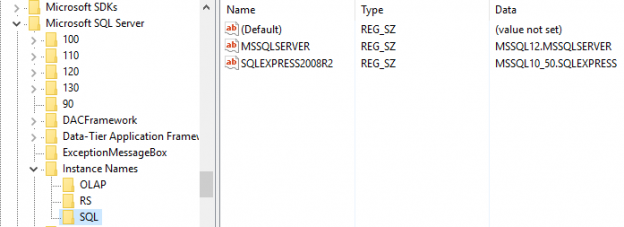
This is the second article in a continuing series on the many system tables, views, procedures and functions available in SQL Server. In the first part of this series, Discovering SQL server instance information using system views, you learned how to discover many attributes of a SQL Server instance you have been given access to. In this part, we will continue the journey and see what else we can find.
Read more »
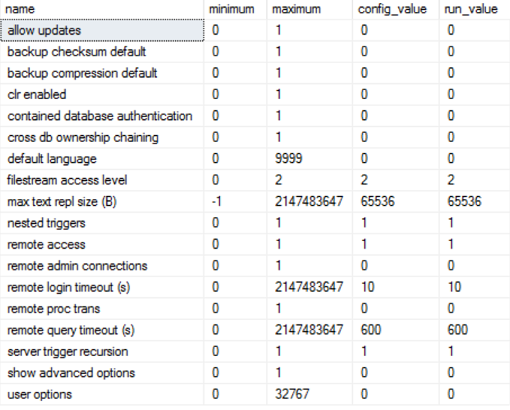
Out of the box, SQL Server comes with a substantial and – release by release – ever-growing set of system tables, views, stored procedures and functions. There’s a good chance you’ve never directly used more than a handful of them. That’s certainly the case with me!
This is the first article in a series designed to explore this world that lives just below the surface of our everyday interactions with SQL Server through the same objects we create to enable the applications we write and support.
Read more »

Since its initial release that was part of SQL Server 2005, Dynamic Management Views (DMV) changed – mostly for the better – the role of database administration (DBA) within SQL Server-based environments. They improved the efficiency of DBAs regarding database server monitoring, issue diagnoses, and subsequent performance optimisation. As a result of this positive reception, it has become customary that some of the highly anticipated items in every release of SQL Server includes discovering what new DMVs will be added. In this article I take you through my favourite top 5 DMVs to come out of SQL Server 2016.
Read more »
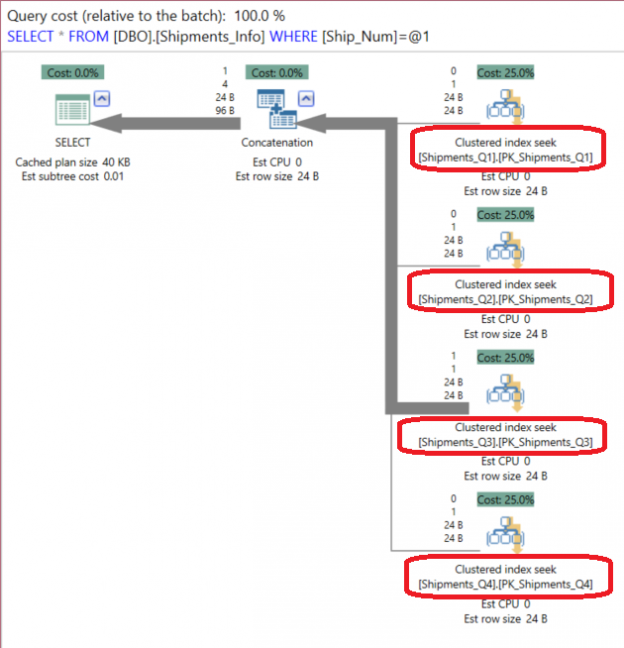
SQL Server table partitioning is a great feature that can be used to split large tables into multiple smaller tables, transparently. It allows you to store your data in many filegroups and keep the database files in different disk drives, with the ability to move the data in and out the partitioned tables easily. A common example for tables partitioning is archiving old data to slow disk drives and use the fast ones to store the frequently accessed data. Table partitioning improves query performance by excluding the partitions that are not needed in the result set. But table partitioning is available only in the Enterprise SQL Server Edition, which is not easy to upgrade to for most of small and medium companies due to its expensive license cost.
Read more »
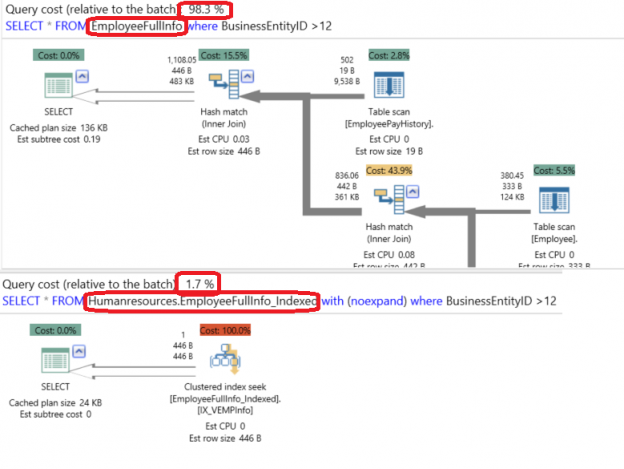
SQL Server Views are virtual tables that are used to retrieve a set of data from one or more tables. The view’s data is not stored in the database, but the real retrieval of data is from the source tables. When you call the view, the source table’s definition is substituted in the main query and the execution will be like reading from these tables directly.
Read more »
We have a series of views in our organization’s application database. The views definitions are all static queries that consist of few or many condition clauses.
When the application first started with the initial data, the views operated normally, but after a while, after a period where data volume increased, the application’s performance time, through the views usage, degraded.
Read more »
In this new article, we will talk about the system views/tables/functions and how to solve common questions using them.
The system views are views that contain internal information about a Database.
The master database for example contains information about the SQL Server itself, while the msdb database contain information about the SQL Server agent and each database has its own system views/tables.
In this article we will show how to get the list of tables, views, stored procedures, how to get a list of tables of all the databases, how to find a table in multiple datatabases, how to get the list of users, logins, mapped logins, how to detect a fragmentation in a table and more.
Read more »© Quest Software Inc. ALL RIGHTS RESERVED. | GDPR | Terms of Use | Privacy